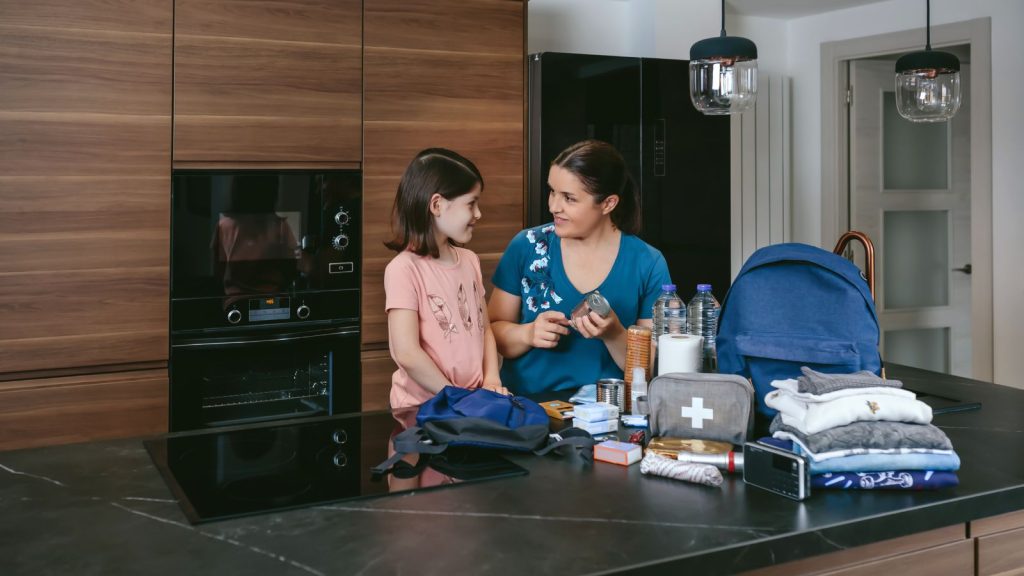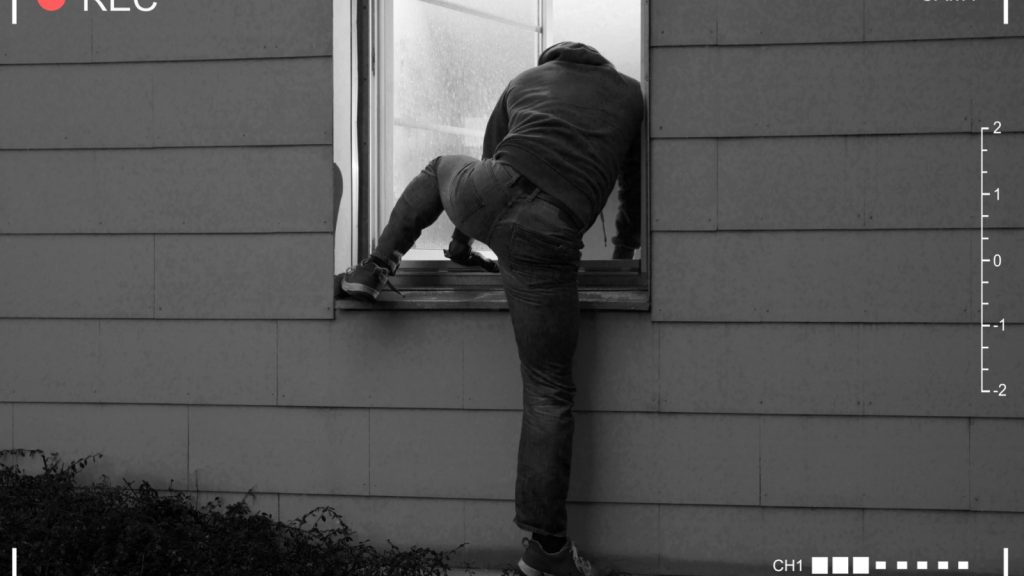Three years ago, my neighbor sliced his hand open while cutting storm-damaged trees after a severe thunderstorm knocked out power in our area. The closest hospital was twenty minutes away on a good day, but with trees blocking roads and emergency services overwhelmed, we were essentially on our own for hours.
That incident taught me something crucial: when disasters strike, medical emergencies don’t pause while you wait for help to arrive. Having the right medical supplies and knowledge can mean the difference between a manageable situation and a catastrophic one.
And it’s for incidents like this that I’ve built comprehensive medical kits for our home, vehicles, and bug-out bags. I’ve also invested time in learning basic medical skills that go far beyond typical first aid. Here’s what I wish I’d known when I started building our emergency medical preparedness.
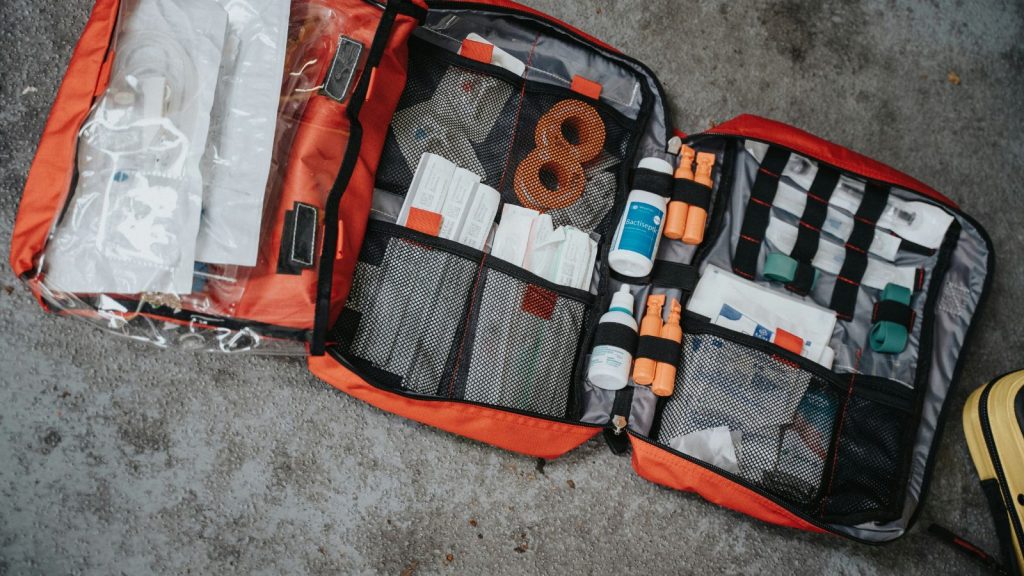
Why Standard First Aid Kits Fall Short
Most commercial first aid kits are designed for minor scrapes and headaches, not true medical emergencies. They typically contain plenty of band-aids but lack the supplies needed for serious trauma situations. During real emergencies, you’re more likely to face severe bleeding, broken bones, or cardiac events than paper cuts.
The drugstore first aid kit we used to keep in our kitchen had maybe twenty band-aids, some alcohol wipes, and a few aspirin. It was useless when my neighbor needed immediate bleeding control and wound care. That’s when I realized we needed to think beyond basic first aid and prepare for actual medical emergencies.
Building Your Home Medical Kit
Your primary medical kit should live in your house and contain enough supplies to handle multiple serious injuries for several days. I keep ours in a large plastic toolbox in our upstairs hallway – easily accessible but out of the way of daily life.
Trauma Control Essentials
The most important category in any emergency medical kit is trauma control. Severe bleeding is one of the leading preventable causes of death in emergencies, and you need the right tools to stop it quickly.
Tourniquets are absolutely critical. I keep two CAT (Combat Application Tourniquet) tourniquets in our main kit and one in each vehicle. These aren’t the cheap elastic bands you find in budget kits – they’re military-grade devices that can completely stop arterial bleeding in an arm or leg. They cost about $30 each, but they’re genuine lifesavers.
Hemostatic gauze like QuikClot Combat Gauze should be your next priority. This gauze is impregnated with minerals that promote rapid blood clotting. You pack it directly into wounds that won’t stop bleeding with regular pressure. I learned to use this in a wilderness first aid course, and it’s incredibly effective for deep cuts and puncture wounds.
Israeli bandages (also called emergency bandages) combine a sterile pad, gauze, and pressure bar in one package. They’re designed to apply constant pressure to wounds while freeing up your hands for other tasks. Each one can handle bleeding from areas where tourniquets won’t work, like the torso.
Wound Care and Infection Prevention
Once you’ve stopped bleeding, proper wound care becomes crucial, especially if medical help is days away.
I stock plenty of sterile gauze pads in various sizes, from 2×2 inches for small wounds up to 5×9 inches for larger injuries. Avoid the temptation to buy the cheapest options – quality matters when you’re dealing with serious wounds.
Medical tape gets overlooked, but it’s essential for securing dressings. I prefer cloth medical tape because it sticks well even when wet and doesn’t irritate skin like cheaper tapes.
Irrigation syringes help clean wounds thoroughly. You can flush out debris and bacteria with clean water or saline solution, which is critical for preventing infection when professional medical care isn’t available.
Triple antibiotic ointment and burn gel treat minor injuries and prevent infection. I buy these in larger tubes rather than tiny packets since we’re planning for extended emergencies.
Diagnostic and Monitoring Tools
Knowing what’s wrong is half the battle in medical emergencies. Basic diagnostic tools help you assess injuries and monitor patients over time.
A thermometer helps identify fever, which could indicate infection or illness. Digital models work fine, but I also keep an old-style glass thermometer as backup since it doesn’t need batteries.
Blood pressure cuff and stethoscope let you monitor cardiovascular health. This becomes important during extended emergencies when stress, dehydration, or medication issues could cause problems. Learning to use these takes practice, but the information they provide is invaluable.
Pulse oximeter clips onto a finger and measures blood oxygen levels and heart rate. These became popular during recent health scares, and they’re useful for monitoring respiratory problems or shock.
Medications and Pain Management
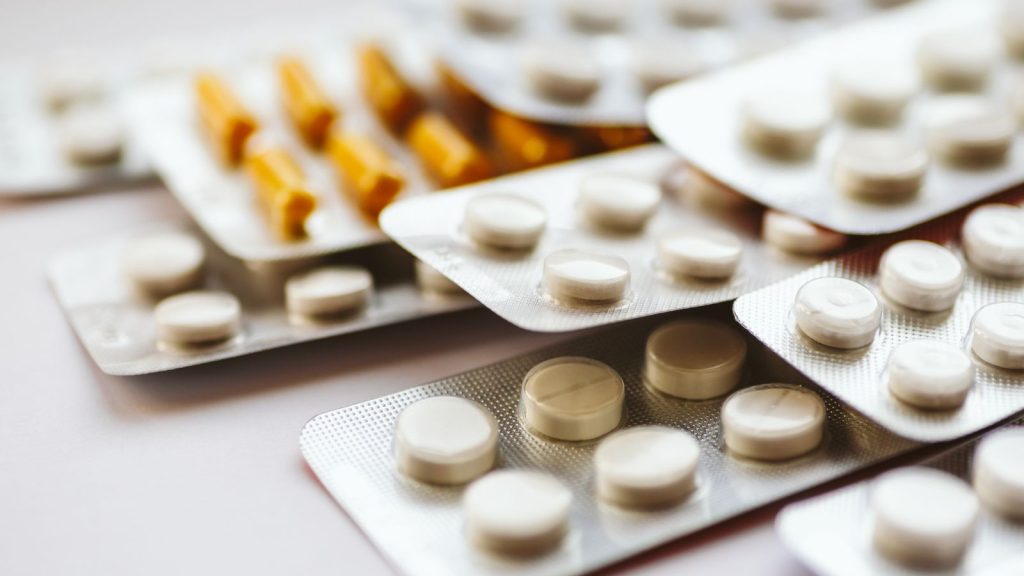
About half of all Americans take a prescription medicine every day, so medication planning is crucial for emergency preparedness.
Keep a minimum 30-day supply of all prescription medications in your emergency kit. Talk to your doctor about getting extra supplies for emergencies. Many insurance plans allow 90-day supplies, which gives you flexibility to rotate stock and maintain fresh medications.
Over-the-counter medications should include pain relievers (ibuprofen and acetaminophen), antihistamines for allergic reactions, anti-diarrheal medication, and electrolyte replacement packets. I buy these in bulk and rotate them before expiration dates.
Antibiotics are prescription-only in most places, but they could be lifesaving during extended emergencies. Some preppers obtain fish antibiotics, which are chemically identical to human antibiotics but come without prescriptions. This is a gray area legally and medically, so research it thoroughly and consult healthcare professionals.
Vehicle Medical Kits
Your vehicle kit needs to be compact but focused on immediate trauma care. I use a MOLLE bag that straps to the back of our driver’s seat and contains the essentials for roadside emergencies.
Each vehicle kit gets one tourniquet, QuikClot gauze, Israeli bandages, nitrile gloves, and emergency blankets. I also include a emergency contact card with important medical information for each family member, including blood types, allergies, and current medications.
Space considerations matter in vehicles. I found that vacuum-sealing bulky items like gauze and bandages reduces their size significantly while keeping them sterile until needed.
Personal Carry Kits
Everyone in our family carries a small individual kit that fits in a pocket or purse. These “everyday carry” (EDC) medical kits handle the minor injuries that happen regularly while ensuring you always have trauma control basics.
My EDC kit fits in an Altoids tin and contains band-aids, alcohol wipes, pain reliever tablets, and a small packet of triple antibiotic ointment. My wife’s kit is slightly larger and includes an epi-pen for her bee sting allergy.
The key is matching your personal kit to your lifestyle and health needs. If you take prescription medications, carry extra doses. If you have chronic conditions, include relevant supplies and emergency action plans.
Essential Skills and Training
Having supplies means nothing without the knowledge to use them effectively. Medical training should be a priority alongside building your kit.
Basic first aid and CPR courses are available through the Red Cross and other organizations. These cover the fundamentals but don’t usually include trauma care or wilderness medicine scenarios that are more relevant to emergency preparedness.
Stop the Bleed courses specifically teach bleeding control techniques using tourniquets and hemostatic gauze. These free courses are offered by hospitals and emergency services nationwide and focus on the skills you’re most likely to need.
Wilderness first aid training goes beyond basic first aid to cover situations where professional medical help is hours or days away. These courses teach improvisation, patient assessment, and decision-making when you can’t simply call an ambulance.
I found that hands-on training with actual supplies was far more valuable than just reading about techniques. Practice using your equipment regularly so you can apply tourniquets or pack wounds quickly under stress.
Storage and Maintenance
Medical supplies require proper storage to remain effective when needed. Heat, moisture, and light can degrade medications and sterile supplies over time.
Temperature control matters especially for medications. I store our main kit in a climate-controlled area of the house rather than a hot attic or damp basement. Vehicle kits face bigger temperature swings, so I check and rotate those supplies more frequently.
Expiration dates need regular monitoring. I review our entire medical inventory every six months, rotating out expired items and restocking as needed. This might seem wasteful, but expired medications can lose potency or even become dangerous.
Inventory lists help track what you have and what needs replacing. I keep a laminated checklist taped inside our main kit that shows quantities and expiration dates for key items. When we use supplies, I note it immediately so I remember to restock.
Budget-Friendly Building Strategies
Building comprehensive medical kits can get expensive quickly, especially if you’re outfitting multiple locations and family members. Here are strategies I’ve used to reduce costs without compromising quality.
Buy in bulk when possible. Large boxes of gauze, gloves, or band-aids cost much less per unit than individual packages. Share bulk purchases with neighbors or family members to split costs.
Military surplus often includes high-quality medical supplies at reasonable prices. Items like Israeli bandages, emergency blankets, and even some medications appear regularly at surplus stores for a fraction of retail cost.
Expired supplies from hospitals or clinics are sometimes available through medical surplus dealers. Items like gauze, tape, and instruments don’t really “expire” in meaningful ways, even if regulations require disposal after certain dates.
Veterinary supplies can substitute for human medical supplies in many cases. Veterinary gauze, syringes, and even some medications are identical to human versions but cost less because they’re not marketed for human use.
Adapting for Your Family’s Needs
Every family’s medical preparedness needs are different based on ages, health conditions, and lifestyle factors.
Families with children need pediatric medications dosed appropriately for kids’ weights, plus comfort items like stuffed animals or tablets loaded with movies for distraction during medical care. Include extra supplies for common childhood injuries like playground accidents.
Elderly family members often require more complex medical preparations. Blood pressure medications, diabetic supplies, and mobility aids become critical during emergencies. Consider how you’ll handle power outages that affect medical equipment.
Chronic conditions require specialized planning. My father-in-law has diabetes, so our family medical kit includes extra glucose testing supplies, insulin storage solutions, and emergency glucose tablets. Document specific emergency protocols for each family member’s conditions.
Pet medical supplies shouldn’t be forgotten. Our dogs need their own medical kit with items like antiseptic wipes, gauze for pad injuries, and emergency contact information for veterinarians.
Testing Your Preparedness
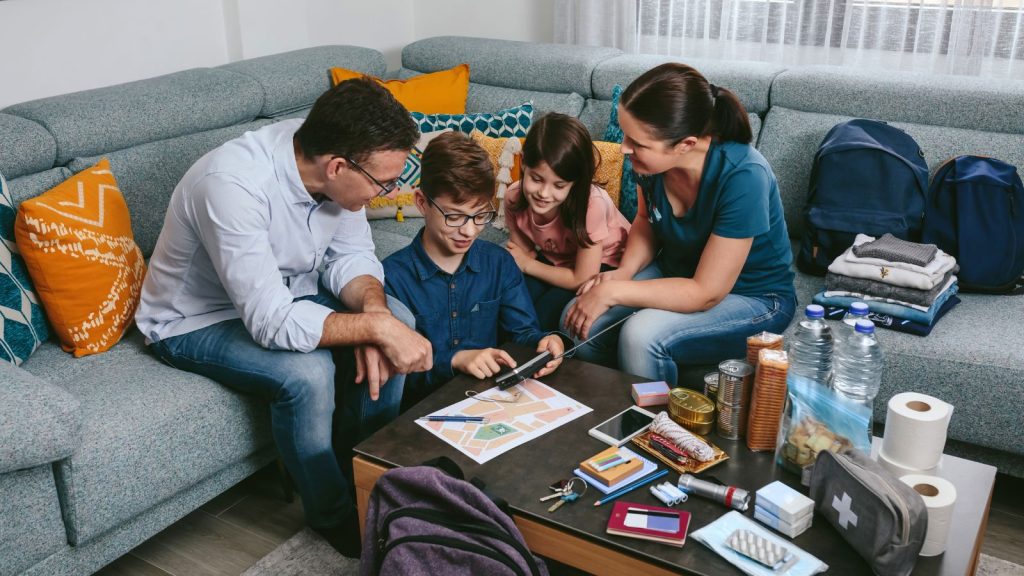
Building medical kits is only the first step. You need to test your preparedness regularly to identify gaps and build confidence in your abilities.
Tabletop exercises involve talking through medical emergency scenarios as a family. What would you do if someone cut themselves badly while power was out? Who knows where the medical kit is stored? How would you contact emergency services if cell towers were down?
Practical drills let you practice using your equipment under realistic conditions. Set up scenarios where family members have simulated injuries and practice your response. Time how long it takes to apply a tourniquet or clean and dress a wound.
Skills refreshers help maintain competency over time. Medical skills deteriorate without practice, so schedule regular refresher training or practice sessions with your family.
The goal isn’t to become a doctor, but to build the confidence and capability to handle medical emergencies when professional help isn’t immediately available. Start with basic supplies and skills, then gradually expand your capabilities as you gain experience and knowledge.
When that next storm knocks out power or that accident happens far from help, you’ll be ready to take care of your family until professional medical care becomes available again. That peace of mind alone makes the investment in emergency medical preparedness worthwhile.
James is a former logistics coordinator and wilderness safety instructor, whose practical experience taught him the value of sensible preparedness and calm resilience. Passionate about self-reliance, James teaches everyday skills—like water purification, emergency communication, and outdoor safety—to help people confidently handle life's disruptions without fear or overwhelm. His approachable style combines real-world insights with relatable, personal stories and experiences.
